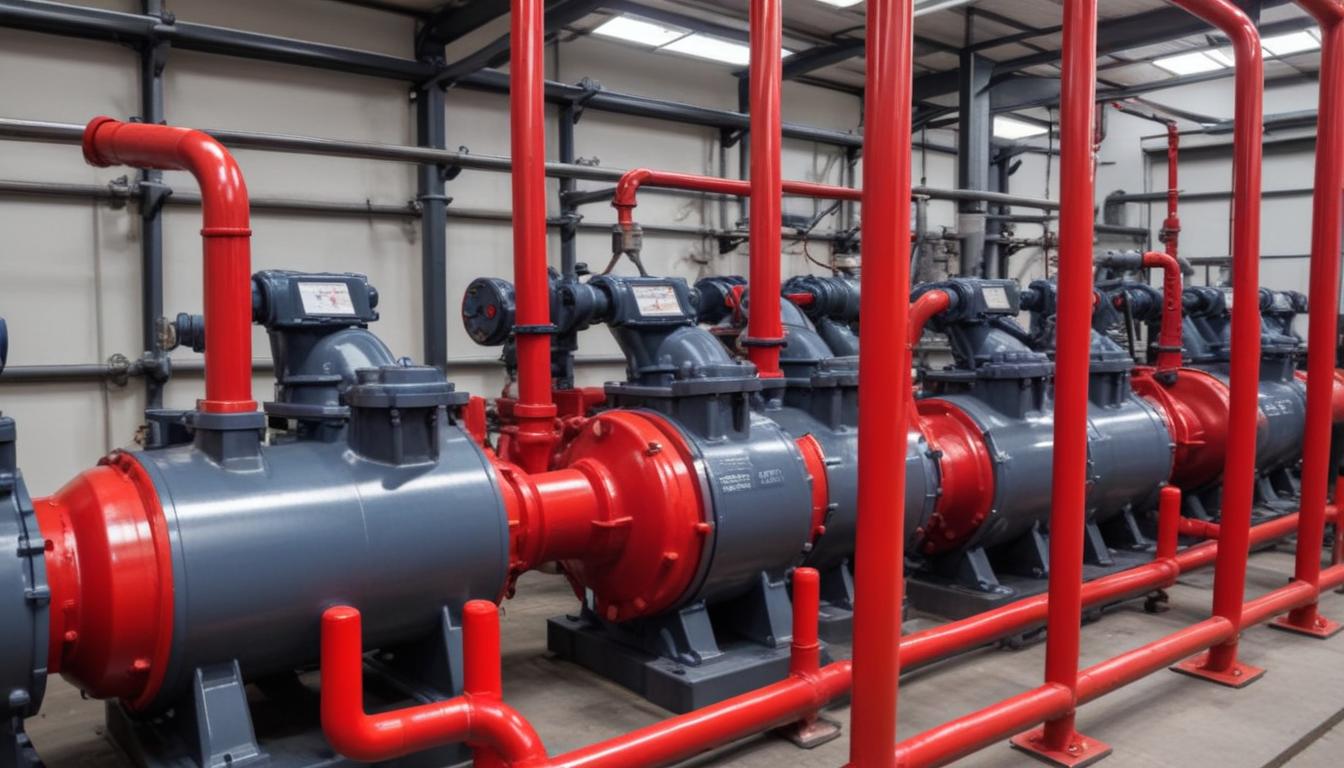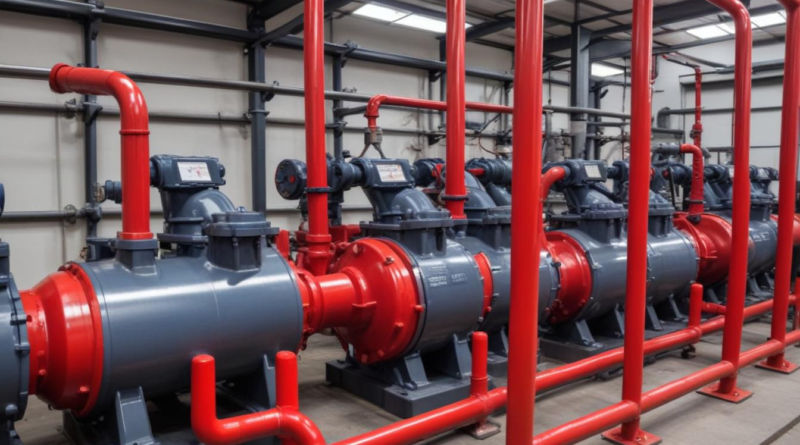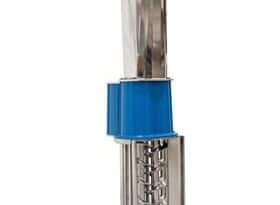the benefits of pump redundancy
Implementing pump redundancy is crucial for ensuring continuous operation in various industrial and commercial applications. By having multiple pumps available, systems can maintain functionality even when one unit experiences a failure or requires maintenance. This redundancy minimizes the risk of complete system shutdowns, which can lead to significant operational losses and disruptions.
Key benefits of pump redundancy for continuous operation include:
- Uninterrupted Flow: Redundant pumps ensure that there is always an alternative pump available to maintain the required flow rates, preventing interruptions in critical processes.
- Automatic Switching: Advanced control systems can automatically switch to a backup pump in the event of a failure, reducing the need for manual intervention and minimizing downtime.
- Load Balancing: Distributing the operational load between multiple pumps can enhance the overall efficiency and lifespan of each unit, contributing to smoother and more reliable performance.
| Single Pump System | Redundant Pump System |
|---|---|
| Higher risk of complete shutdown if the pump fails | Continuous operation maintained even if one pump fails |
| Potential for longer repair times affecting overall system uptime | Quick switch to backup pump reduces repair time impact |
| Limited scalability and flexibility | Enhanced scalability to support growing demands |
Implementation considerations for pump redundancy:
- Assessment of Critical Loads: Identify which parts of the system require uninterrupted operation to prioritize redundancy implementation.
- Selection of Appropriate Backup Pumps: Choose backup pumps that are identical or compatible with primary pumps to ensure seamless integration and performance.
- Regular Testing and Maintenance: Conduct routine tests to ensure that backup pumps are functional and ready to operate when needed, thereby maintaining system reliability.
By integrating pump redundancy, organizations can significantly enhance their ability to maintain continuous operation, thereby supporting overall system reliability and operational efficiency.
enhancing system reliability
Implementing pump redundancy significantly contributes to the overall system reliability by minimizing the chances of unexpected failures and ensuring that operations remain stable under varying conditions. Redundant pump configurations provide a buffer against individual pump malfunctions, thereby maintaining the integrity and performance of the entire system.
Key factors through which pump redundancy enhances system reliability include:
- Fault Tolerance: Redundant pumps allow the system to continue functioning even if one pump fails, preventing complete operational shutdowns.
- Consistent Performance: Distributing the workload across multiple pumps ensures that each unit operates within optimal parameters, reducing wear and tear and extending the lifespan of the equipment.
- Redundancy Configurations: Various redundancy strategies, such as N+1, N+2, or 2N setups, can be tailored to meet specific reliability requirements and operational demands.
- Enhanced Monitoring and Control: Advanced control systems can continuously monitor pump performance, enabling proactive maintenance and quick response to potential issues.
| Redundancy Configuration | Advantages | Typical Applications |
|---|---|---|
| N+1 | Provides a single backup pump, balancing cost and reliability | Small to medium-sized facilities where cost-effectiveness is crucial |
| N+2 | Offers two backup pumps, increasing fault tolerance | Industries requiring higher reliability, such as pharmaceuticals and food processing |
| 2N | Doubles the number of pumps for maximum reliability | Critical infrastructure like power plants and large-scale water treatment facilities |
Benefits of Different Redundancy Configurations:
- N+1 Configuration:
- Cost-effective solution for enhancing reliability
- Suitable for systems with moderate reliability requirements
- N+2 Configuration:
- Higher reliability with two backup pumps
- Reduces risk of simultaneous pump failures
- 2N Configuration:
- Maximum redundancy, ensuring uninterrupted operation
- Ideal for mission-critical applications where downtime is unacceptable
By strategically selecting and implementing the appropriate redundancy configuration, organizations can significantly bolster their system reliability. This proactive approach not only safeguards against potential disruptions but also ensures that operations remain efficient and dependable, ultimately contributing to sustained business success.
minimizing downtime risks
Implementing pump redundancy plays a pivotal role in minimizing downtime risks, which is essential for maintaining uninterrupted operations and safeguarding against unexpected disruptions. By having multiple pumps available, systems are better equipped to handle pump failures or maintenance activities without affecting overall performance.
Key benefits of pump redundancy in minimizing downtime risks include:
- Immediate Backup Availability: Redundant pumps provide an instant alternative when the primary pump fails, ensuring that operations continue seamlessly without waiting for repairs.
- Reduced Recovery Time: With backup pumps ready to take over, the time required to restore full system functionality is significantly decreased.
- Enhanced Fault Tolerance: The presence of multiple pumps allows the system to absorb individual pump failures without compromising the entire operation.
- Continuous Monitoring and Alerts: Advanced monitoring systems can detect pump issues in real-time and activate backup pumps automatically, further reducing the likelihood of prolonged downtime.
| Single Pump System | Redundant Pump System |
|---|---|
| Prone to extended downtime during pump failures | Minimizes downtime by quickly switching to backup pumps |
| Higher risk of operational interruptions | Ensures continuous operation even if one pump is out of service |
| Limited flexibility in handling unexpected issues | Greater adaptability to manage pump malfunctions without affecting overall system performance |
Strategies to effectively minimize downtime risks through pump redundancy:
- Comprehensive Risk Assessment: Analyze potential failure points within the pump system to determine the necessary level of redundancy.
- Selection of Reliable Backup Pumps: Choose backup pumps that match or exceed the performance characteristics of primary pumps to ensure seamless integration and functionality.
- Implementation of Automated Control Systems: Utilize advanced control systems that can automatically detect pump failures and initiate backup pump operation without manual intervention.
- Regular Maintenance and Testing: Perform routine maintenance and testing of both primary and backup pumps to ensure they remain in optimal working condition and are ready to operate when needed.
By incorporating pump redundancy, organizations can significantly reduce the risks associated with downtime. This proactive approach not only enhances system reliability but also ensures that critical processes remain operational, thereby avoiding costly interruptions and maintaining overall operational efficiency.
optimizing maintenance schedules
 Implementing pump redundancy plays a crucial role in optimizing maintenance schedules, allowing organizations to perform necessary upkeep without disrupting ongoing operations. By having multiple pumps in the system, maintenance can be carried out on individual units without necessitating a complete shutdown, thereby enhancing overall efficiency and prolonging equipment lifespan.
Implementing pump redundancy plays a crucial role in optimizing maintenance schedules, allowing organizations to perform necessary upkeep without disrupting ongoing operations. By having multiple pumps in the system, maintenance can be carried out on individual units without necessitating a complete shutdown, thereby enhancing overall efficiency and prolonging equipment lifespan.
Key benefits of pump redundancy for optimizing maintenance schedules include:
- Scheduled Maintenance Flexibility: Redundant pumps enable maintenance tasks to be planned during non-peak hours or without affecting critical operations, ensuring that systems remain functional while maintenance is performed.
- Extended Equipment Lifespan: Regular and timely maintenance is easier to implement with backup pumps available, reducing wear and tear on each individual pump and extending their operational life.
- Reduced Emergency Maintenance: With redundancy in place, the likelihood of unexpected pump failures decreases, allowing maintenance teams to address issues proactively rather than reactively.
- Improved Resource Allocation: Maintenance can be scheduled more efficiently, allowing personnel and resources to be allocated effectively without the pressure of immediate downtime needs.
| With Pump Redundancy | Without Pump Redundancy |
|---|---|
| Maintenance can be performed on one pump while others continue operation | System shutdown is often required for maintenance, leading to potential operational delays |
| Maintenance schedules can be more regular and less disruptive | Maintenance is typically reactive, occurring only after a failure |
| Extended intervals between major overhauls due to balanced usage | Pumps may wear out more quickly without the ability to balance operational loads |
Strategies for optimizing maintenance schedules through pump redundancy:
- Implement Predictive Maintenance:
- Utilize sensors and monitoring systems to predict when maintenance is needed, allowing for timely interventions without interrupting operations.
- Leverage data analytics to identify patterns and potential issues before they lead to pump failures.
- Develop a Comprehensive Maintenance Plan:
- Create detailed maintenance schedules that account for all pumps in the redundant system, ensuring each unit receives regular attention.
- Coordinate maintenance activities to minimize overlap and maximize system uptime.
- Train Maintenance Personnel:
- Ensure that maintenance teams are well-trained in working with redundant pump systems, including understanding how to switch between primary and backup pumps effectively.
- Provide ongoing education on the latest maintenance techniques and technologies to enhance system reliability.
- Utilize Automated Control Systems:
- Implement automation to manage pump operations, allowing seamless transitions between pumps during maintenance periods.
- Use control systems to track maintenance tasks, ensuring that all necessary activities are completed promptly and efficiently.
By leveraging pump redundancy, organizations can streamline their maintenance processes, ensuring that essential maintenance activities do not interfere with ongoing operations. This approach not only enhances the system reliability but also contributes to the overall efficiency and longevity of the pumping infrastructure, providing significant benefits in operational management and cost savings.
supporting scalability and growth
Implementing pump redundancy is essential for organizations aiming to scale their operations and accommodate growth seamlessly. By incorporating redundant pump systems, businesses can ensure that their infrastructure remains robust and adaptable to increasing demands without compromising on performance or reliability.
Key benefits of pump redundancy in supporting scalability and growth include:
- Flexibility in Expansion: Redundant pump systems allow for the easy addition of new pumps to meet rising operational demands, facilitating smooth scaling as the business grows.
- Consistent Performance: As demand increases, having multiple pumps ensures that the system can handle higher loads without overburdening individual units, maintaining optimal performance levels.
- Future-Proofing Infrastructure: Investing in pump redundancy prepares the system for future expansions and technological advancements, ensuring long-term viability and reducing the need for major overhauls.
- Enhanced System Reliability: Redundant pumps provide a safety net that supports continuous operation during periods of growth, preventing potential bottlenecks and ensuring that the system remains reliable under increased stress.
| Single Pump System | Redundant Pump System |
|---|---|
| Limited capacity for handling increased demand | Easily scalable by adding additional pumps to meet growing needs |
| Higher risk of performance degradation under load | Maintains performance by distributing the load across multiple pumps |
| Requires significant downtime for upgrades | Allows for incremental upgrades without disrupting overall operations |
Strategies to leverage pump redundancy for scalability and growth:
- Modular System Design:
- Design pump systems with modularity in mind, enabling the straightforward addition or removal of pumps as needed.
- Ensure that each pump module can operate independently or in conjunction with others to accommodate varying levels of demand.
- Capacity Planning:
- Analyze current and projected demand to determine the necessary number of redundant pumps required for future growth.
- Implement scalable redundancy configurations, such as N+1 or 2N, based on anticipated expansion needs.
- Integration with Control Systems:
- Utilize advanced control systems that can manage and optimize multiple pumps, ensuring efficient operation as the system scales.
- Enable automated adjustments to pump operations in response to fluctuating demand, maintaining system reliability during growth.
- Regular Performance Monitoring:
- Continuously monitor pump performance metrics to identify opportunities for scaling and to ensure that the system can handle increased loads.
- Use data-driven insights to make informed decisions about when and how to expand the pump infrastructure.
Considerations for scaling with pump redundancy:
- Space and Infrastructure: Ensure that sufficient space and infrastructure are available to accommodate additional pumps as the system scales.
- Energy Efficiency: Optimize the energy consumption of redundant pumps to support sustainable growth and reduce operational costs.
- Cost Management: Balance the costs associated with adding redundant pumps against the benefits of increased capacity and reliability.
By strategically implementing pump redundancy, organizations can effectively support their scalability and growth objectives. This approach not only facilitates the seamless expansion of operations but also ensures that the system remains reliable and efficient, even as demands increase. The integration of redundant pump systems provides a scalable foundation that can adapt to evolving business needs, driving long-term success and operational excellence.



